Search Results
Fine Jewelry University Articles matching: “pear cut diamond setting”
Showing only FJU Article results. Click here to show all results.
Fine Jewelry University (Show All FJU Articles)
-
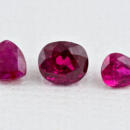
Gem in the Spotlight: Ruby
… oxide with a Moh’s hardness of 9. This makes ruby one of the hardest gems commonly used in jewelry second only to diamond (which has a Moh’s hardness of 10) and moissanite (which is in between). Rubies only occur in the color red which …ruby, and was originally mined in Myanmar. The Sunrise Ruby was eventually set by Cartier into a ring along with two diamonds weighing a total of 5 carats. In 2015, Sotheby’s put the ring up for auction where it sold for a record setting $30…
-
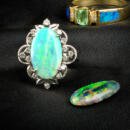
Gem in the Spotlight: Opal
… commonly used in jewelry. For reference, here are the Mohs hardness values for some other gemstones you may know: Diamond 10, Sapphire 9, Amethyst 7, and Peridot 6. Turquoise is about as hard as opal, but you would need to consider Pearl or… machines or abrasive jewelry cleaners that could potentially damage the stone’s surface. For more valuable stones, setting them in a pendant or earrings instead of a ring will help them last as long as possible. With proper care opals can …
-
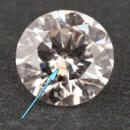
What Are Lab Grown Diamonds?
In the simplest terms, lab grown diamonds are diamonds that have been made by people instead of mined out of the earth. If it’s so simple, you might wonder …this sentence. The complexity arises from the fact that lots of different terms have been used to describe lab grown diamonds and their cousins, and not everyone uses these terms in the same way. So, let’s begin with some vocabulary. … mean man-made, copied, unreal, or even imitation. But, in this context, what do we mean when we say “synthetic diamond”? In the gemological world, synthetic is a highly technical term. When speaking technically, synthetic gems are man-made …
-

How Are Lab Grown Diamonds Made?
The dream of making a beautiful and valuable diamond from simple carbon has long captivated the imagination of scientists and visionaries alike. Just like the alchemists…, many have tried to achieve this impressive feat. We have only recently been able to produce gem quality, lab grown diamonds that are large enough to be used in jewelry. But, how is it done? Early Efforts Throughout history, many people …. Henri Moissan was one of the early pioneers in the field. In 1893, he claimed to have successfully made a diamond by heating charcoal to 3,500 degrees Celsius inside a carbon crucible. Many attempts were made to reproduce his techniques …
-
Caring for and Cleaning Your Jewelry
How to Clean Jewelry A diamond‘s spectacular beauty is due to its light show. Diamonds make light reflect, show its many colors, and dazzle. To … and lotions add a coating that stops the light show. Dust and dirt stick to the grease and oils creating a lifeless diamond. Cleaning your diamond jewelry at home is simple and rewarding. Use a soft toothbrush and mild soap then rinse … key to diamond cleaning is the underneath side or pavilion. The light needs a clean surface to bounce upward. The diamond may need to be scrubbed several times before all the build up is removed. Some don’ts of jewelry cleaning. Never use …
-
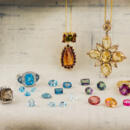
Gem in the Spotlight: Topaz
…ht. History and Lore Topaz in its pure form is naturally colorless, clear like a diamond. The famous “Braganza Diamond” was thought to be the largest diamond ever found (prior to the Cullinan Diamond) at 1,680 carats and was set in the Portu… to put coatings on lenses for glasses and cameras. It is also one of the processes that is used to create lab grown diamonds . A thin, multi-colored film is bonded on the surface of colorless topaz to create all the colors you see in Mystic…
-
Synthetic Gems: The Whole Story
… to plastic to high tech chemical tongue twister like gadolinium gallium garnet (also called GGG) and the modern diamond simulant Moissanite, a man made silicon carbide. In gemology, any material used to look like a gem is called a simulant… clear glass, rock quartz, GGG, and Moissanite are all diamond simulants. They look like diamonds, but they are not diamonds. These simulants are easy for a well trained and equipped gemologist to detect. But if you had gem material that is …
-
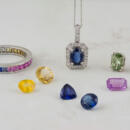
Gem in the Spotlight: Sapphire
… contains several sapphires. One of them, the Saint Edward’s Sapphire, is a large sapphire set in the center of a diamond cross on top of the British Imperial Crown. According to legend, Edward the Confessor, King of the Anglo-Saxons from …, green, orange, and golden yellow are magnificent in any jewelry. See More on Etsy › With the exception of the diamond, which measures 10 on the Mohs scale, sapphire and ruby (9 on the Mohs scale) are the toughest and most durable gemstones…
-
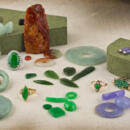
Gem in the Spotlight: Jade
… like splitting hairs, but it actually has a big impact on how gems are worn and what they can handle. We all know diamonds are the hardest gem commonly available on earth. If you scraped them together, a diamond would scratch a piece of …mark on the diamond. However, if you decided to smack both gems with a hammer (please don’t try this at home), the diamond would have a greater chance of shattering than the tougher jade. Nephrite: A silicate rich in calcium, iron and …